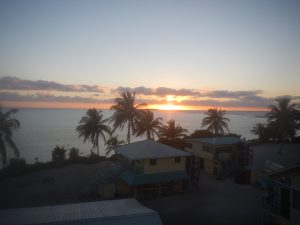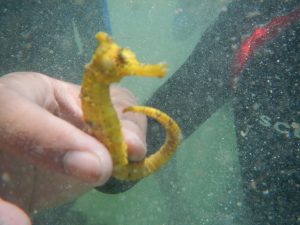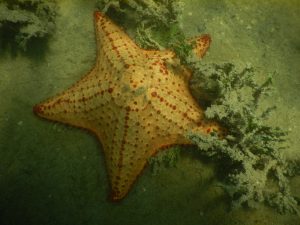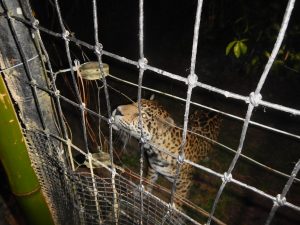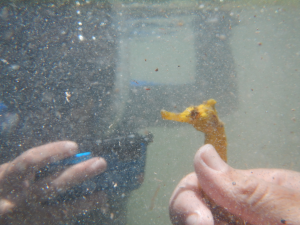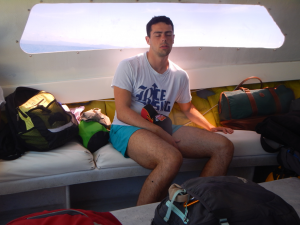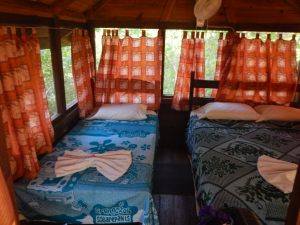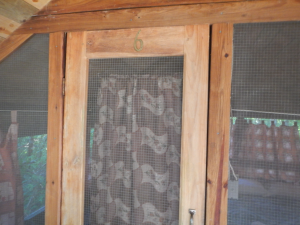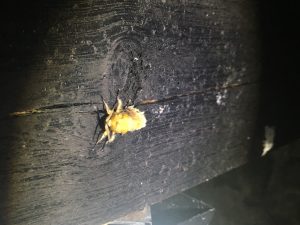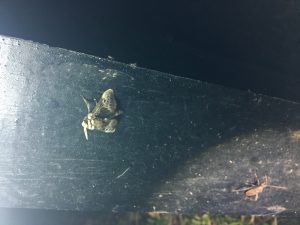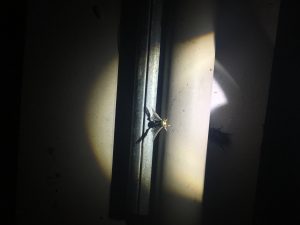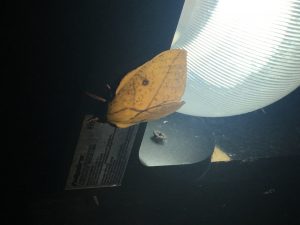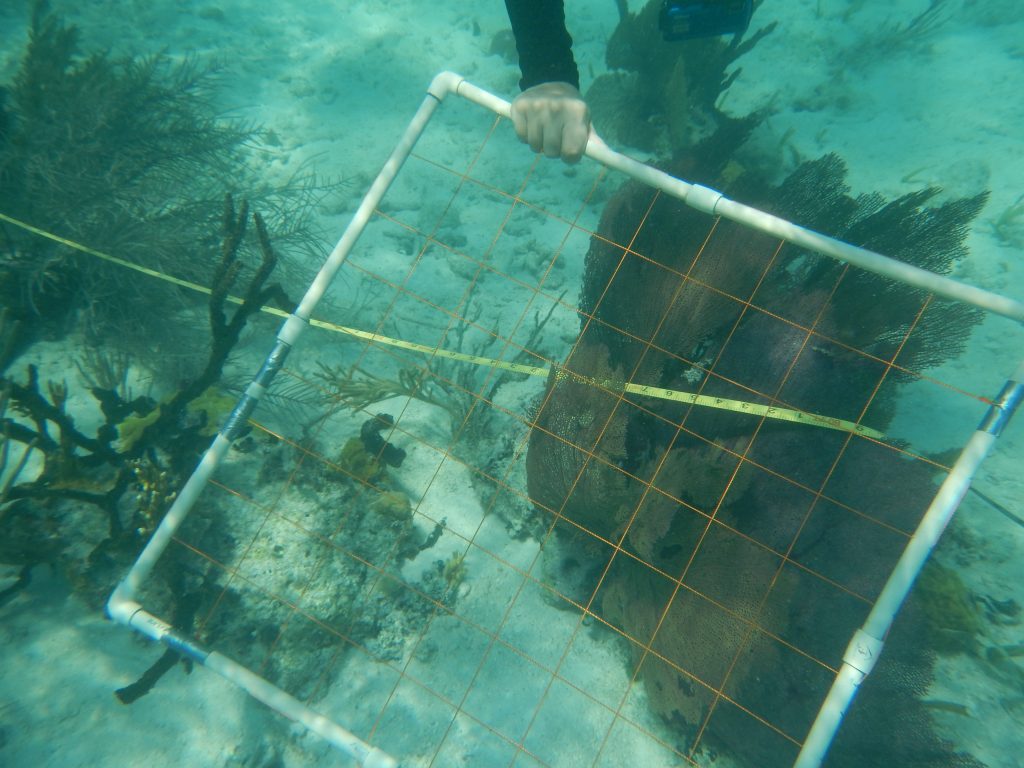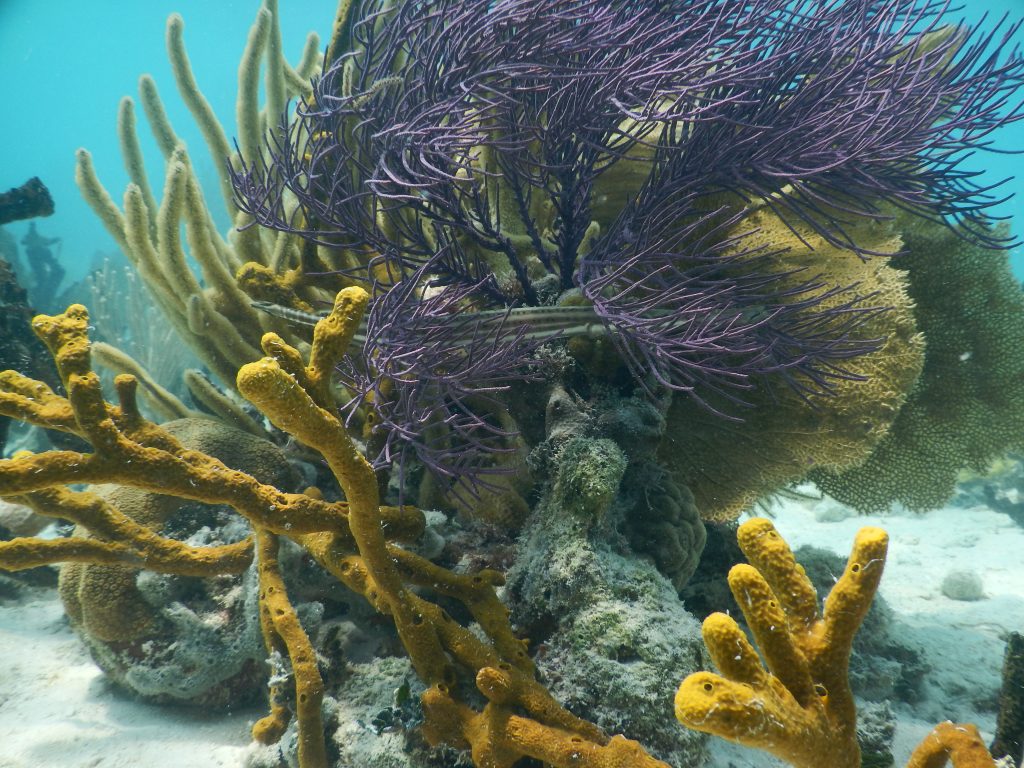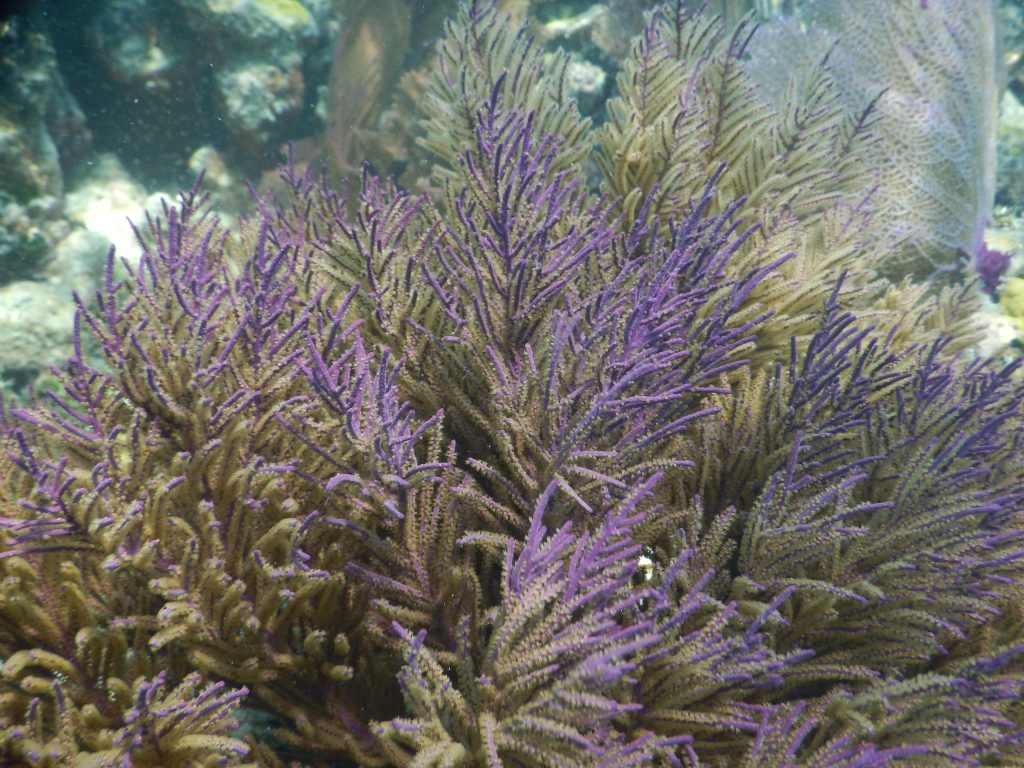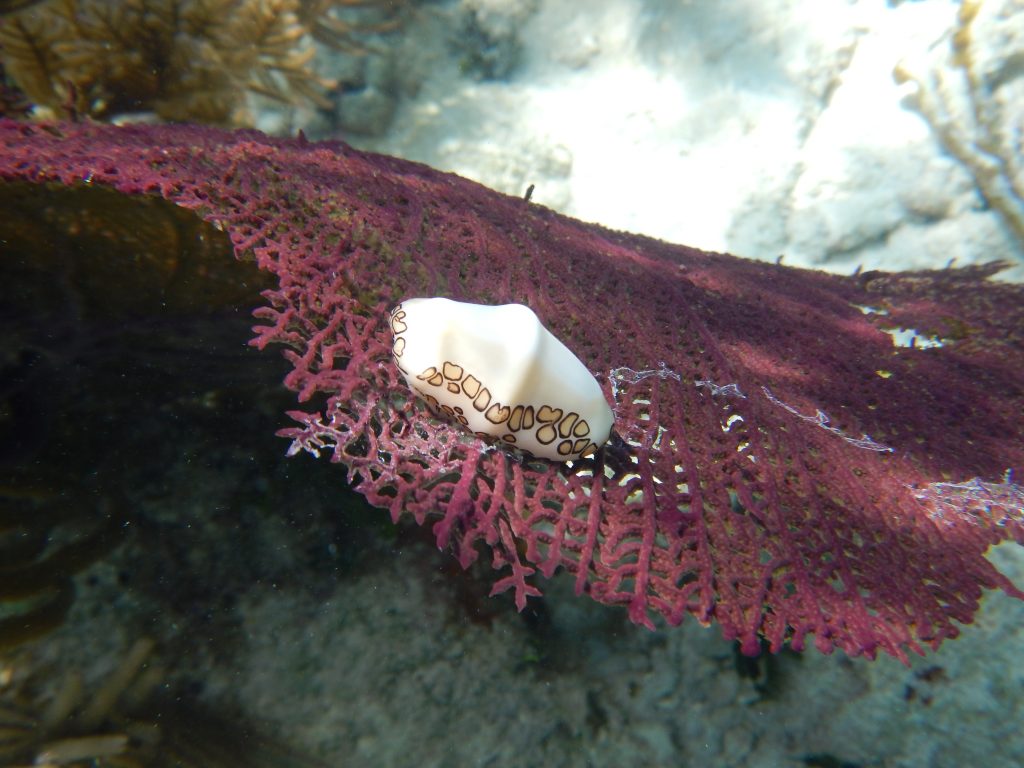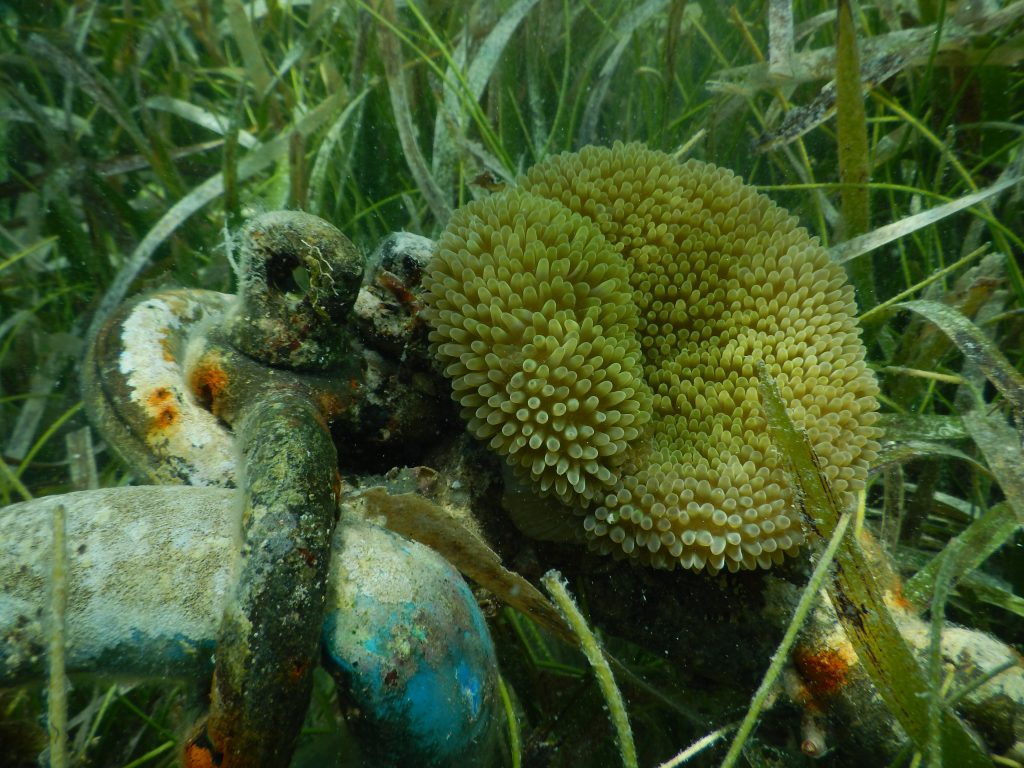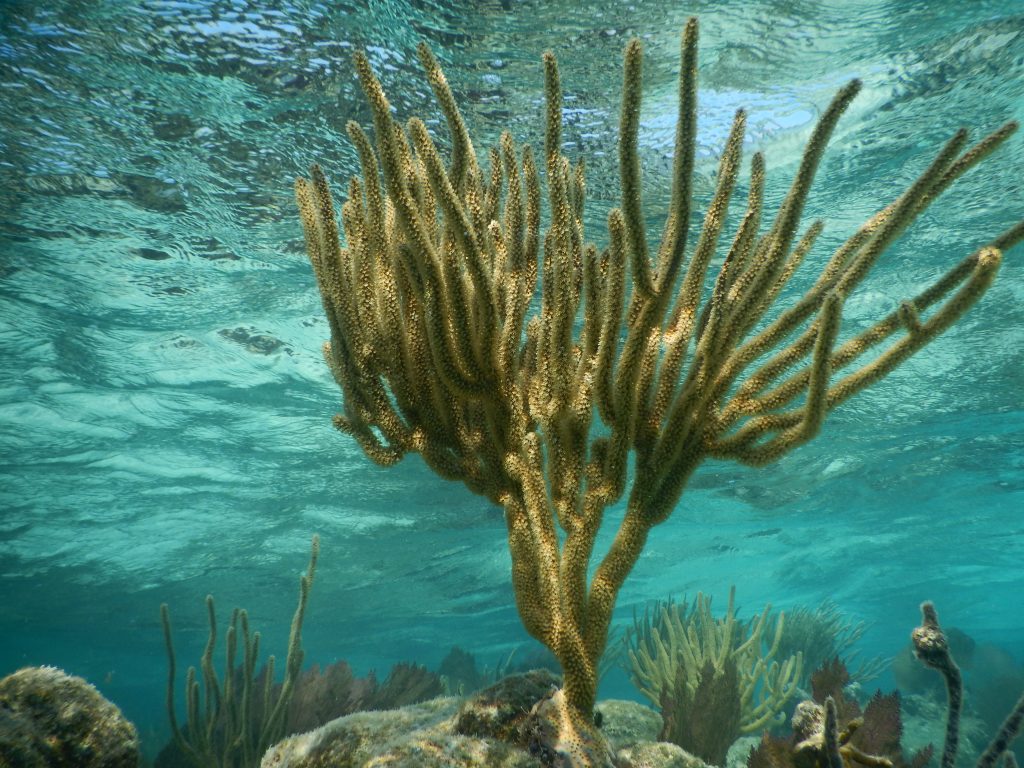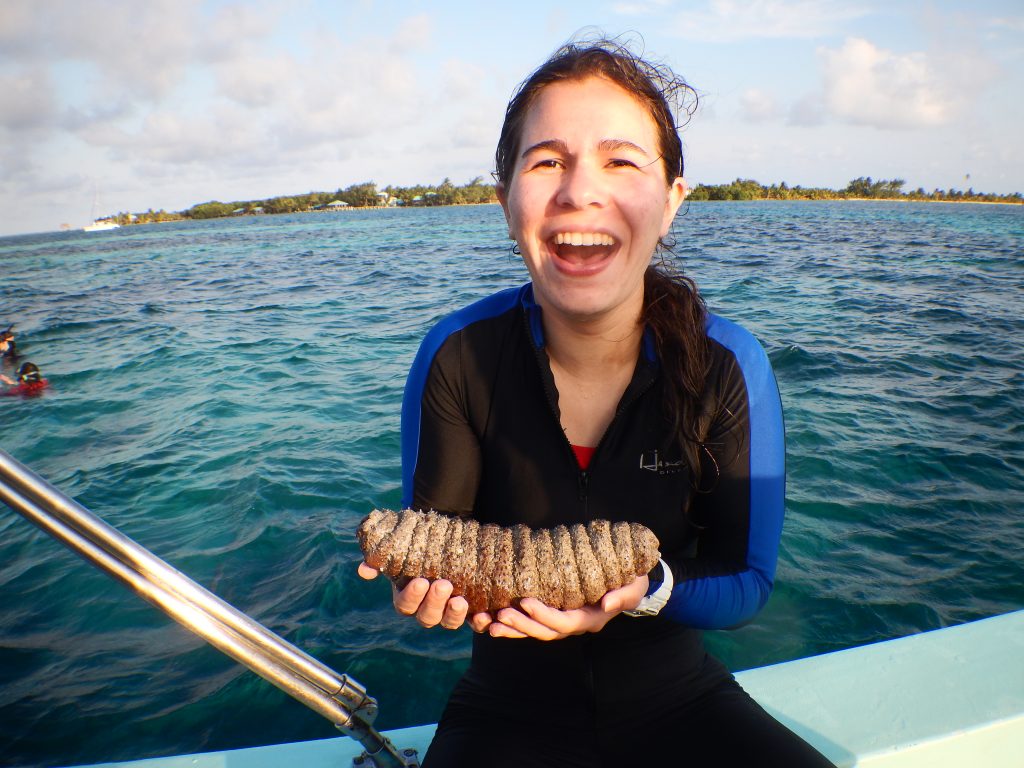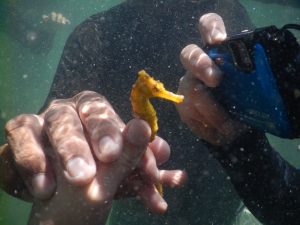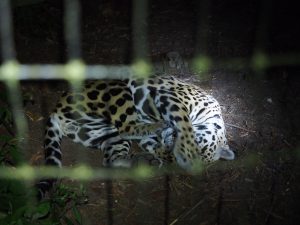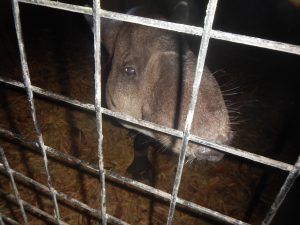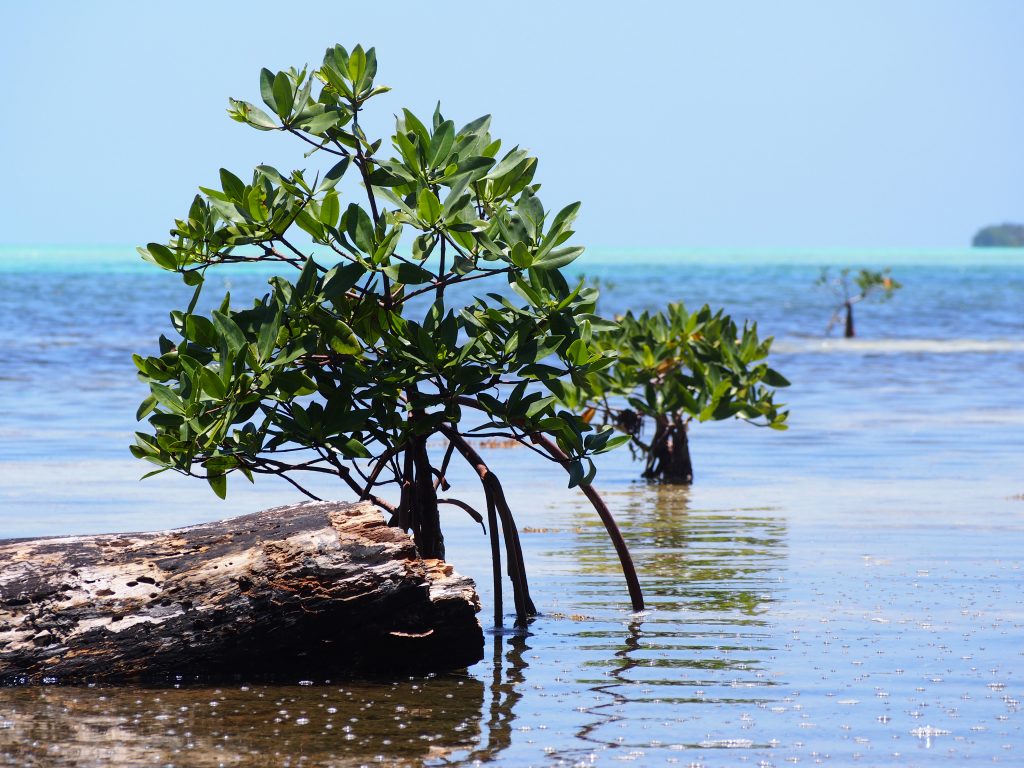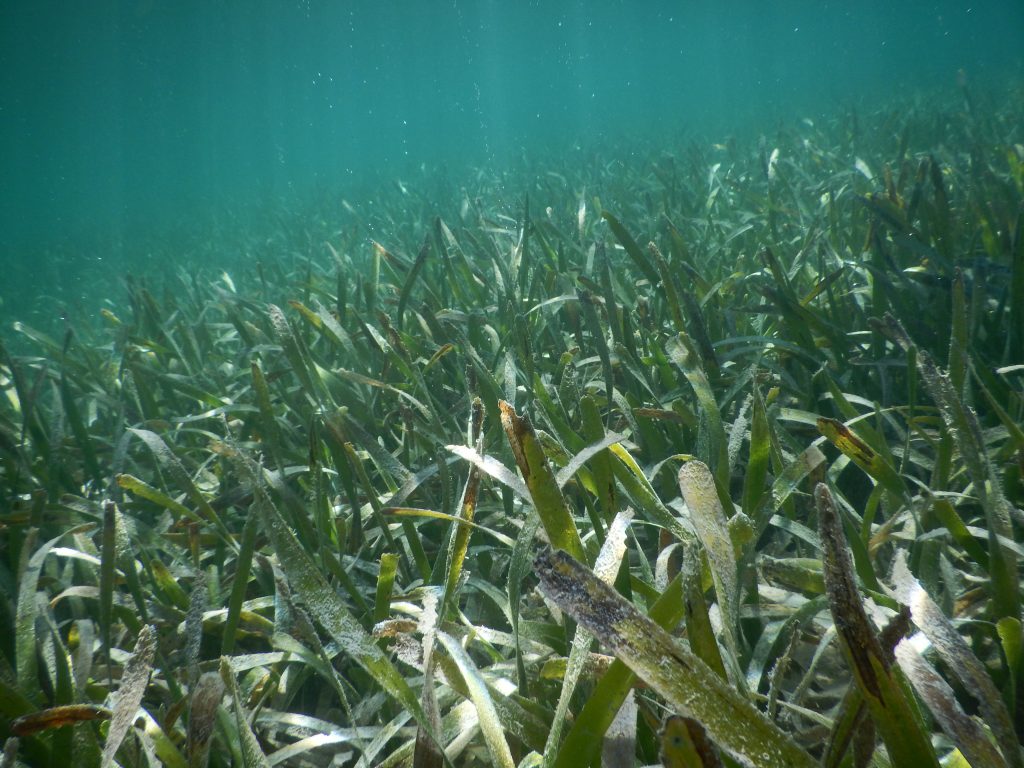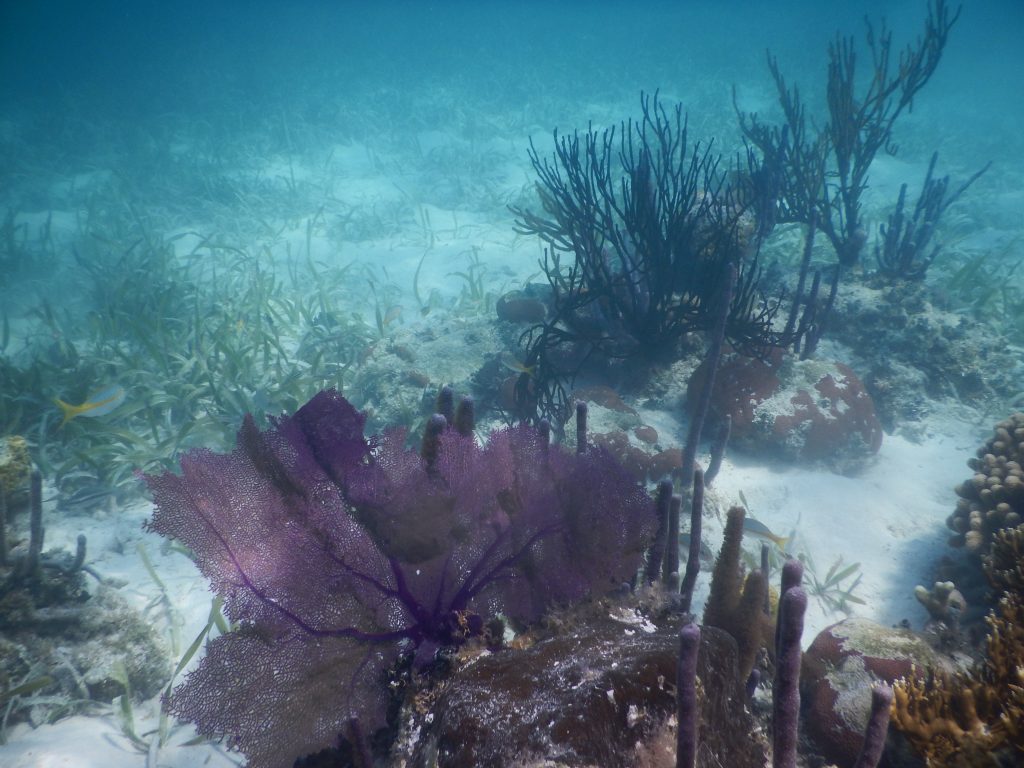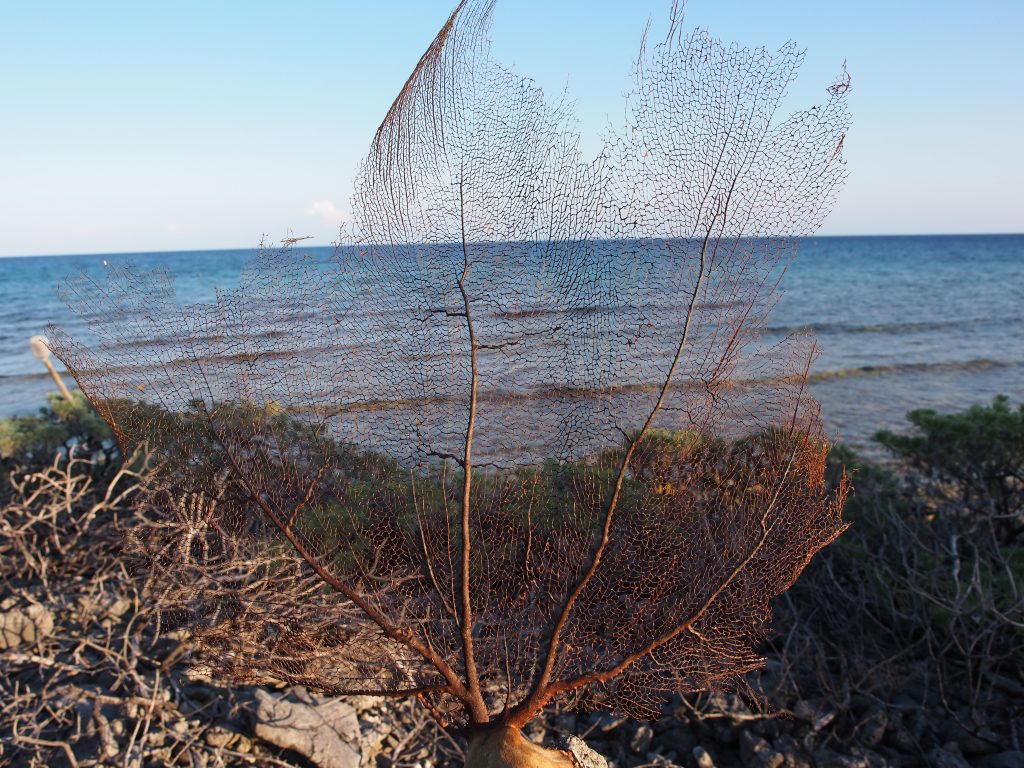This morning, as part of our last day on Glover’s, a few of us woke up early to watch the sun rise from the watch tower. This time, no clouds obscured the view and the sunrise was perfect. We left soon after, though, and had departed by 8am. At this point, we set our course for Carrie Bow Cay, an island in the atoll that is owned by Smithsonian and used for research. It was a very small island that could only host a few people, but it was quite nice.
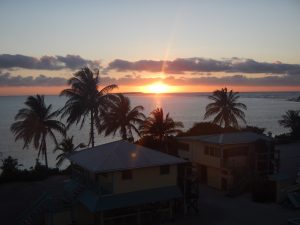
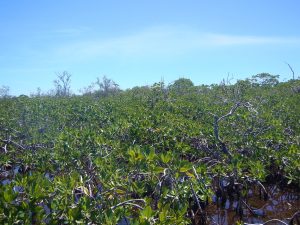
After touring there, we went to the nearby Twin Cays, where we waded into a mangrove forest and snorkeled in the sea near the mangroves. We saw a manatee from the boat, and in the water we spotted tons of sea stars and even a seahorse.
We got back to land at about 1pm, at which time I can say that, for the first time, I have fallen asleep on a moving boat. We ate a big lunch at Calypso before driving back to the Tropical Education Center, where we will again be staying for the night. We walked some of the trails here, where I got mosquito bites on my face, ate dinner, and then went to the nearby Belize Zoo for a nighttime visit. We got to see lots of big cats like a puma, an ocelot, and an especially friendly jaguar named Junior that loved rolling around on the ground. We also saw a few reptiles; we saw a Boa Constrictor, a fer-de-lance (Bothrops asper), one American Crocodile (Crocodylus acutus), and one Morelet’s Crocodile (Crocodylus moreletii). Once again, I can’t wait for my ice cold shower later, especially because the water pressure will be reasonable here.

